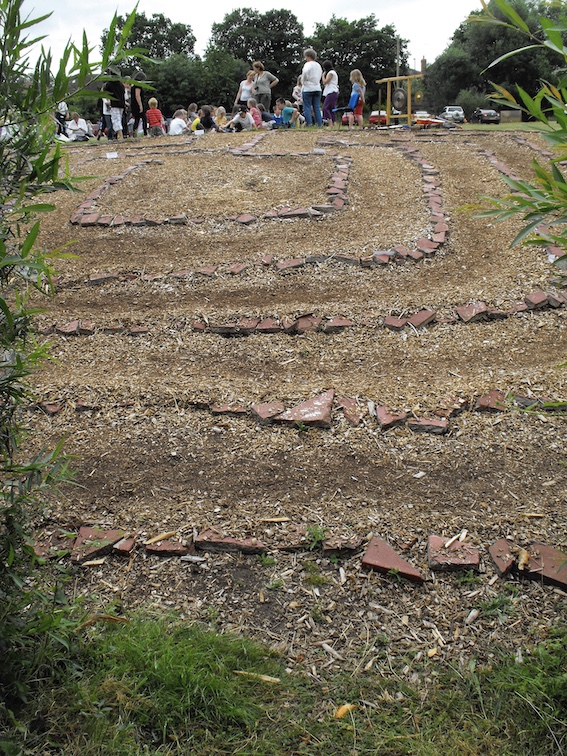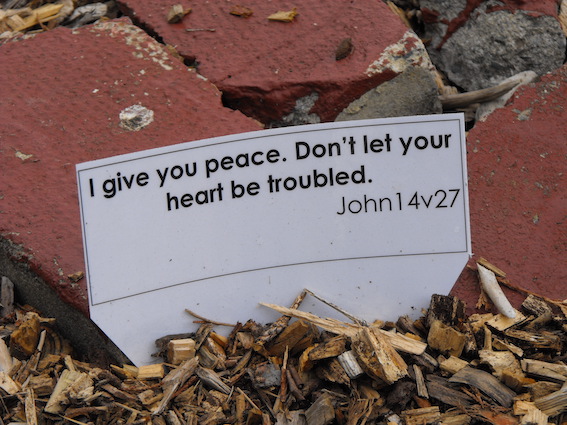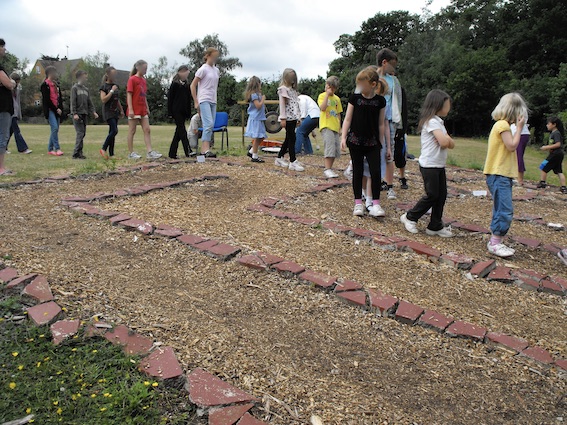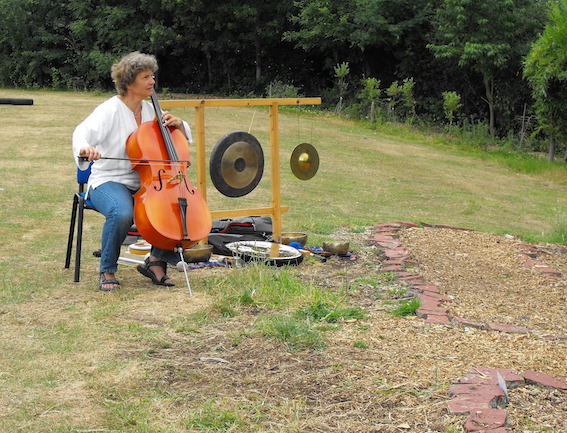Many years ago, during a school grounds conference, the Coombes School had created this temporary labyrinth in their school grounds. It’s a substantial affair – big enough for a class to use.

The construction of the labyrinth is remarkably simple. The turf has been removed and bark chips placed directly on top. Broken tiles and man made stones are used as lines. This means that it is very easy to change the layout according interest, ability and need. In fact if you look at this YouTube clip, the layout is different:
On the day I was there, many classes went out to undertake the controlled reflective walking as described in the video clip. At intervals along the path were questions and biblical quotes to think about, if you wished.

The children and adults walked the path of the labyrinth, following one behind each other.

Whilst we were walking and reflecting, a parent played music for us. This really made the atmosphere quite special and calm.

Once you had gone through the labyrinth, everyone was asked to gather at Coombeshenge, the nearby stone circle and to sit or stand there quietly waiting for the whole class to complete the reflective walk. Next, everyone was asked to share their thoughts as they walked through the maze. The questions and biblical quotes were discussed briefly. I really liked the simplicity of this activity as one approach to undertaking RME outside.

Now in case you are wondering if and whether there is any difference between a maze and a labyrinth, the answer can be found at this A-maze-ing website. It would not appear to be that simple. I tend to describe a maze as having a problem-solving element where one has to find their way through a challenge. A labyrinth is a place where one walks reflectively through a given pathway in a small space.
This blog post was originally published in July 2010.






























What a fresh and innovative way of taking RE outdoors. Just gorgeous.
My 5-1/2 year old would love this! He loves playing follow the leader and especially enjoys following patterns on the ground or in gardens. What a lovely place to visit!
If we had the space Juliet a labyrinth is something Sherry and I would absolutely, most definitely want to have!
Donna 🙂 🙂
What I liked about this labyrinth is that it opened my eyes about the potential for reflection. The activity doesn’t need to be religious…but it can be…it can be whatever we want it to be.
This wouldn’t be practical in a small space, but a silent follow the leader in a natural space for a minute or two would be uninteresting experiment with a group of very young children.
Children rarely have solitude at school. This sort of activity just gives an alternative contemplative time. Hmm..
I perhaps also should have said that The Coombes School is a Church of England state school so Christianity has to be component of the curriculum. However I did like the sensitive way this was covered. I think children from different faiths or with no religious upbringing would be comfortable with the approach taken here.
I walk a labyrinth with other artists several times a year. When done as you describe here, it is a remarkable opportunity to reflect.
I was just thinking about mazes yesterday. We were trying out the wool-web ideas that our Australian friends have been doing at their schools. At one point I realized the children were no longer weaving a web, but instead were treating it like a kind of maze.